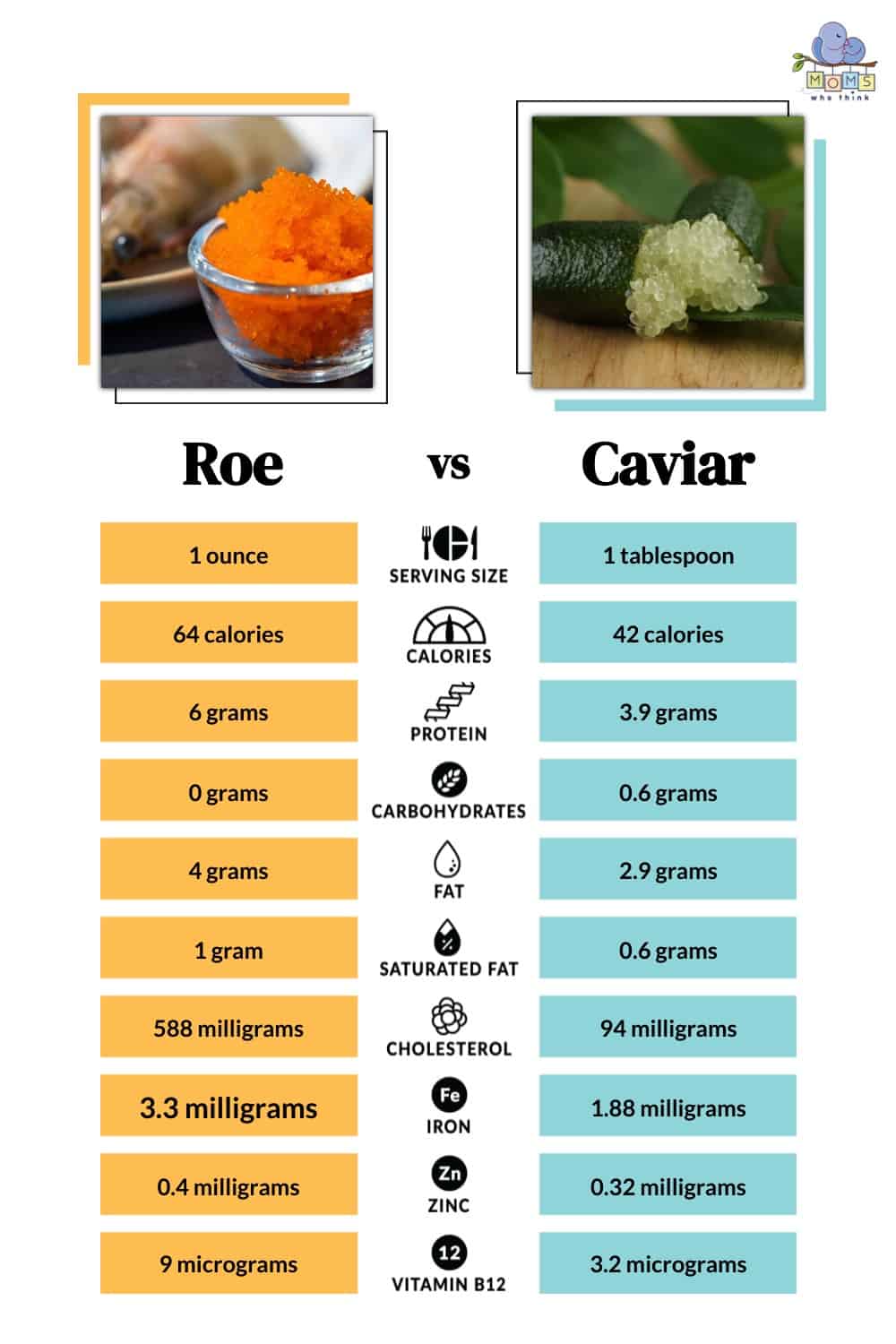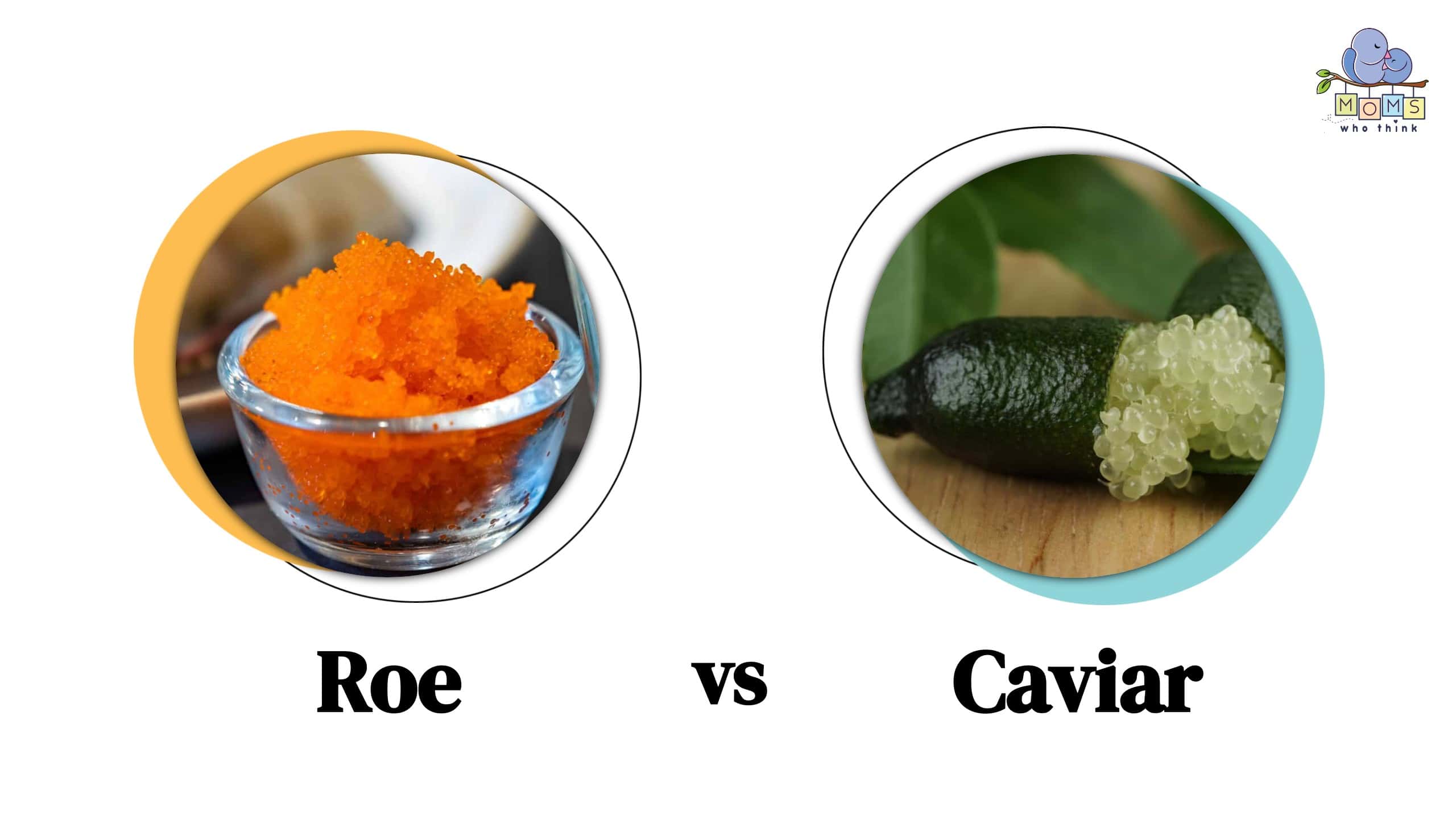When it comes to the world of gourmet cuisine, few ingredients elicit as much fascination and culinary allure as fish eggs. Two terms that often come up in discussions about these delicacies are “roe” and “caviar.” While both originate from fish eggs and are roe, only sturgeon roe can be considered caviar. They also differ significantly in terms of their sources, flavors, colors, uses, and even price tags. In this article, we'll take a closer look at the unique differences that set roe and caviar apart.
What is Roe?
Roe, or hard roe, consists of fully ripe internal egg masses found in the ovaries or externally released egg masses in fish and certain marine creatures like shrimp, scallops, sea urchins, and squid. It serves as both a cooked ingredient in many dishes and a raw component for delicacies such as caviar. Roe encompasses fish eggs, varying in size, flavor, and color depending on the fish, and is used in various culinary applications, including sushi, salads, spreads, and garnishes. In contrast to caviar, which is specific to sturgeon eggs, roe includes eggs from different fish species.
What is Caviar?
Caviar (pronounced Ca-vee-are), a delicacy, is salt-cured roe typically from wild sturgeon in the Caspian and Black Seas. It's prized for its buttery flavor and smooth texture, often served in small quantities with accompaniments. Caviar is a luxury food and is one of the world's most expensive delicacies. Why? It is because of sturgeon population concerns and this prompts a shift toward sustainable aquaculture.
Roe vs. Caviar: Key Differences
What Kind of Fish?
One of the most fundamental distinctions between roe and caviar is the type of fish they come from:
Roe is a broader term encompassing the eggs of various fish species, not limited to sturgeon. This is especially true in the United States where you'll find various types of roe produced from different fish. For example, on the West Coast, salmon roe (from salmon) is popular for its orange color and salty taste. On the East Coast, fish like shad, herring, and others contribute to roe production.
And some other fish species like mullet (from the grey mullet in Florida), paddlefish (from the Paddlefish freshwater in the rivers of Mississippi, Tennessee and Kentucky), tuna, swordfish, halibut, and the American bowfin also provide roe.
Sometimes you can enjoy international roe from gourmet grocery stores. For example, trout roe (from trout farmed in France), and tobiko (from flying fish found in the Northern Atlantic around Iceland).
On the other hand, caviar is the processed eggs, or roe, of sturgeon fish species only. For example, the Beluga, Osetra, and Sevruga. Sturgeon caviar is often revered as the epitome of luxury dining.
Flavor and Texture:
The flavor and texture of these fish eggs vary dramatically:
Caviar eggs are typically larger and are celebrated for their delicate, rich, and buttery taste. The texture is often described as creamy and smooth, providing a luxurious mouthfeel.
On the flip side, the size, flavor, and texture of roe can differ greatly depending on the fish species. For instance, salmon roe is known for its vibrant orange hue and a burst of briny, oceanic flavor. Tobiko, on the other hand, features smaller, crunchy eggs with a mild, slightly sweet taste.
Color
The color of these fish eggs can be a visual delight!
Roe exhibits a spectrum of colors based on the species. Salmon roe shines in bright orange, while trout roe may span from orange to dark red. Tobiko often boasts eye-catching colors such as red, green, and black.
On the other hand, caviar comes in a range of colors. Take for instance Beluga caviar. It's the lightest boasting a pale gray or silver, while Osetra caviar typically appears as a brown or golden color. Why are there different hues? They are influenced by the sturgeon species and their dietary choices.
Roe vs. Caviar: Price and Availability
The cost of these delicacies can vary significantly. Here’s why:
You can get fish eggs on your sushi without breaking the bank. That’s considered the cheaper form of “caviar”. But what you’re really getting is roe, maybe from salmon, lumpfish or some other species. Fish roe is generally more affordable than caviar. However, prices can still fluctuate depending on the type and quality of the roe.
When it comes to caviar, it is considered one of the most expensive delicacies in the world. This is especially true for rare wild sturgeon species like Beluga or Osetra. The scarcity of sturgeon and the lengthy maturation process required to produce quality caviar contribute to its high price tag. So it comes as no surprise that caviar can range from $50 to a whopping $500 per ounce, according to the Global Seafoods of North America.
Roe vs. Caviar: Health Benefits
Both roe and caviar are nutrient rich foods. For example…
Take a look at salmon roe. It's a valuable source of omega-3 fatty acids, supporting heart health and brain function. Additionally, roe offers high-quality protein, essential vitamins (such as B12) and minerals, antioxidants like vitamins A and E, and collagen, which promotes healthy skin, hair, and joints.
As far as caviar, it is also a rich source of omega-3 fatty acids. This is beneficial for heart health and is a high-quality protein essential for various bodily functions. Caviar also contains essential vitamins (such as B12, A, E, and D) and minerals (like selenium and zinc), providing antioxidant properties that protect cells from damage. Additionally, it contains collagen, which may support skin and hair health, and the omega-3s may promote cognitive function and brain health.
Note:
With both roe and caviar, it’s important to be mindful of its sodium content, especially when eating salt cured. Please take into account the potential variations in mercury levels based on the fish species. Consult with a healthcare professional or nutritionist if you have specific dietary concerns or health considerations.
Roe vs. Caviar: Ways to Enjoy
The applications of both roe and caviar are diverse in the culinary world! Take a look:
People enjoy roe in various ways, like pan-frying shad, pike, or other roe types with bacon. And in the Southeast, flounder roe is pan-fried and served with grits, a regional favorite. These regional roe dishes highlight the diversity of American seafood cuisine.
You can also enjoy roe as a garnish for sushi, sashimi, or seafood dishes. It adds color and flavor to salads and can be used to create spreads like taramasalata. Or you can just eat it plain, directly from the jar! All in all, roe is more versatile than caviar and can be used generously in various dishes.
What about caviar?
It is typically enjoyed on its own as a luxurious delicacy. Because of its exquisite quality, caviar is savored in small quantities to fully appreciate its distinct flavor and texture. It's best served using a mother-of-pearl spoon or directly from a caviar bump. What is a caviar bump?
It means a tiny amount of sturgeon roe that you enjoy in one bite. It's like taking a shot, but instead of using a plate or spoon, you “bump” the caviar off your hand. It's an enjoyable experience, especially when shared with friends!
Other excellent caviar pairings include buttered toast points, crème fraiche, blinis, chips or crackers, and cheese.
Roe vs. Caviar: Nutritional Value

Final Thoughts
Roe and caviar both come from fish eggs, but they're quite different. Roe includes a bunch of flavors, textures, and colors, and you can use it in many dishes. It is less expensive than caviar. On the other hand, caviar, which comes only from sturgeon, is known for its fancy, buttery taste. It is also one of the most expensive delicacies in the world. Whether you want a luxurious meal or a chance to get creative in the kitchen, these fish eggs have unique qualities that make them special in the world of food. So, which one will you choose?
Easy Recipe with Roe or Caviar
Roe or Caviar Appetizer with Blinis and Crème Fraîche

